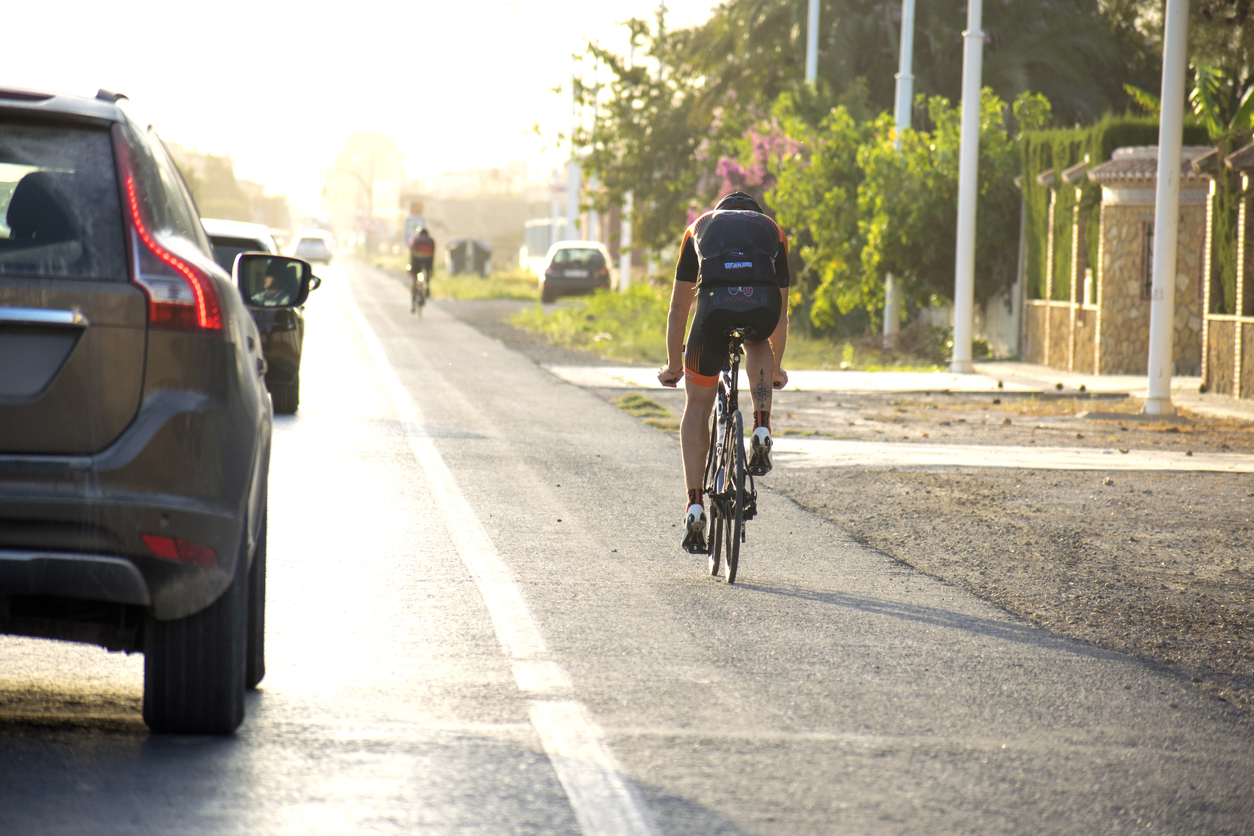With more bikes on the road, communities are scrambling to implement changes to help protect cyclists from vehicle collisions. And help is needed. While auto fatalities are declining, cyclist fatalities are increasing.
In 2018, 857 cyclists were killed in traffic accidents in the United States. This figure represents a significant increase over prior years. The deadliest states in 2018 for cyclists were California, Texas, Florida, and New York.
Many communities are putting more distance between cars and bikes by constructing more miles of bike lanes. But tech is also stepping up to make bikes more visible to automobile drivers, even when the drivers cannot physically see the bikes. New technology is being developed to help cars and bikes speak to each other on the road in real-time.
Bike to Car Communication
Increasingly, cars are being outfitted with computers and sensors that allow the car and driver to be aware of other vehicles on the road. Vehicle to vehicle (V2V) wireless communication technology in cars allows short-range wi-fi communications regarding the speed and position of surrounding vehicles. This allows a 360-degree sense of the cars immediately around the car receiving the communication. The system can deliver warnings and alerts to drivers of impending dangerous conditions.
Bike to car transmission technology is being developed that would do much the same thing. Fiat Chrysler and the 5G Automotive Association trade group are involved in a 5G wireless program using a cellular vehicle-to-everything (C-V2X) approach that allows bikes to “speak” to vehicles around them.
A Demonstration of What the Technology Can Do
A recent demonstration of the C-V2X approach was held in Turin in 2019. In that case, the technology signaled an alert for the driver of a car that a cyclist ahead had moved into a dangerous position. The driver slowed to allow the cyclist more room. The bike had been specially equipped with both a global navigation device and a transceiver to transmit the bike’s location to cars around it.
These signals can be sent by either Bluetooth or a wireless network. This would enable the system to work with a wireless phone that a rider may carry in a pocket or backpack. This makes the technology more affordable for cyclists.
This technology can alert a car about the location, speed, and projected location and speed as the vehicle nears the bike. It can alert a driver about cyclists that are around the corner and out of the driver’s sightline. The question being sorted out at present is not whether the driver can get information. Rather, technology is trying to narrow in on what information would be most helpful for the driver.
Fine Tuning the Technology
There is a lot of information that could be passed on to a driver. This technology is trying to zero in on what is most helpful while filtering out less helpful information. Information that is helpful may include such things as a cyclist’s speed, direction, turning radius, and maximum possible acceleration for the type of bike. These are all pieces of information that when coupled with roadway information, can help predict a cyclist’s path. It is hoped that the system will be able to predict paths for users of e-bikes, scooters, road bikes, and single-speed bikes.
Car manufacturers Ford, General Motors, and Subaru have teamed up together with bicycle companies like Giant, Specialized, and Trek as part of the Bicycle-to-Vehicle Executive Advisory Board. This cross-industry coalition is working together to improve mobility and safety options.
Trek has been working with Tome, a software company, and Ford on developing B2V technology. B2V technology is anticipated to be a part of the C-V2X technology which would allow cars and bikes to talk to each other. BV2 systems would identify potential problems and identify safety measures for specific roadway locations.
The Bicycle-to-Vehicle Executive Advisory Board hopes to roll out testing of a comprehensive C-V2X system by the end of the year. Critical issues in testing will include reliability, accuracy, and sufficient warning time for drivers to take corrective action.
Timelines and Other Safety Tools
This does not mean that the technology will be ready for implementation any time soon. Nor is this technology the only safety measure that should be used. The technology will need to be readily available in most vehicles and available for cyclists at an affordable price. The technology would also need to be pervasive to be effective. If we continue to move toward autonomous vehicles, the technology will become necessary.
However, continuing to separate bikes from vehicles and making bikes as visible as possible to drivers remains the gold standard in safety. Much of this is considered to be low-tech. Low tech options include continuing to improve and lengthen available bike lanes and bike paths, posting the separation between vehicle and bike lanes, and adding daytime running lights to bikes to make them more visible.
There may well come a day when cyclists and vehicles peacefully coexist on the roadways. Communities are continuing to implement safety precautions. These coupled with increasingly sophisticated technology makes the vision of a peaceful and safer coexistence much more possible.


